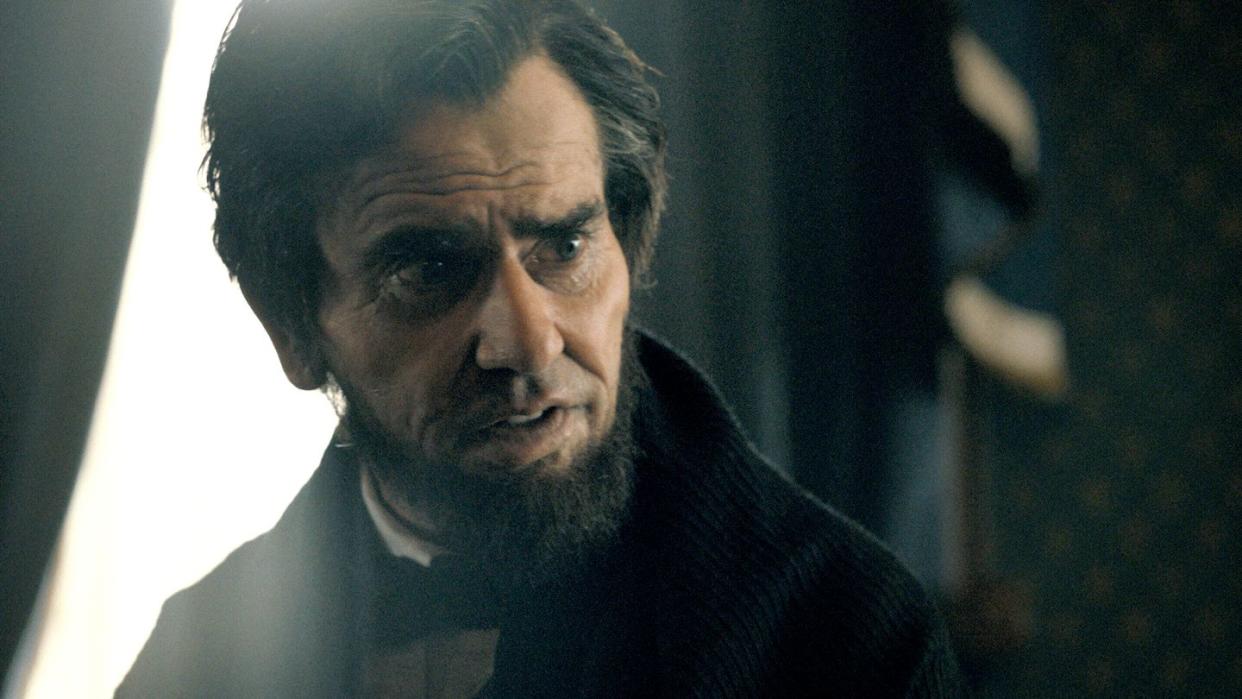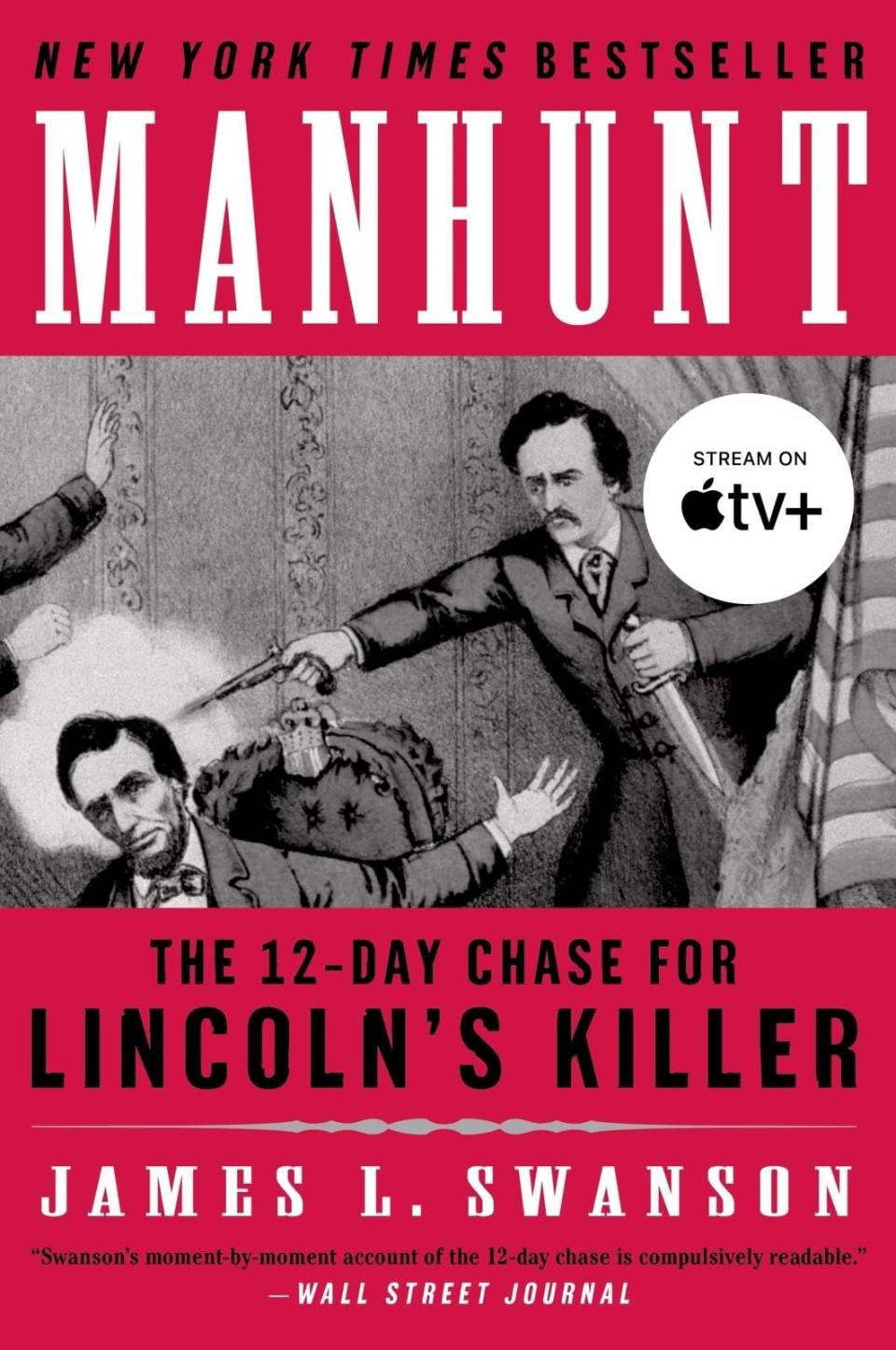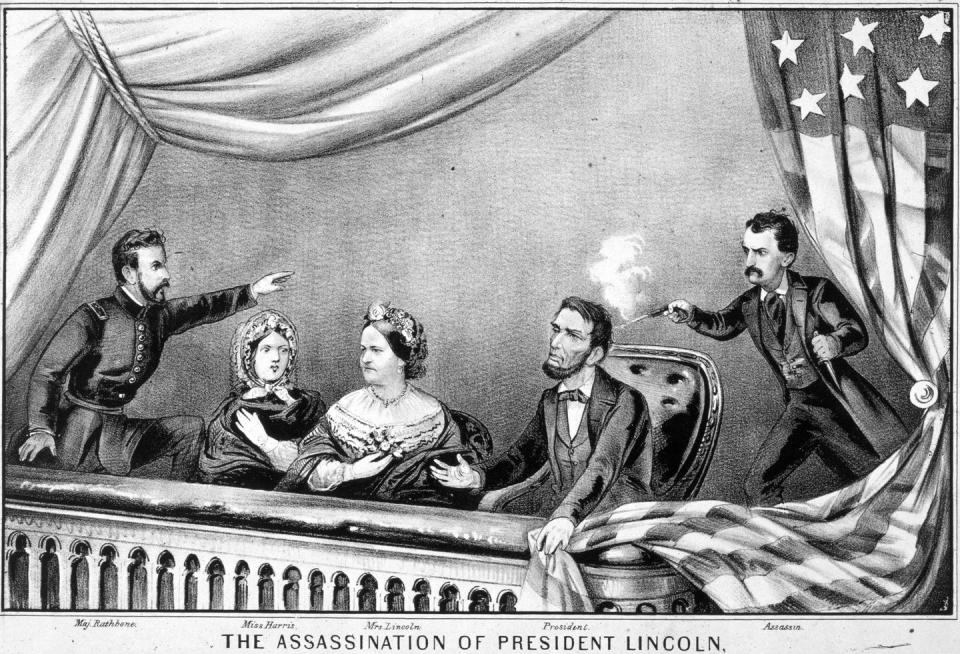In 'Manhunt,' the Historical Truth Is Stranger Than Fiction

- Oops!Something went wrong.Please try again later.
- Oops!Something went wrong.Please try again later.
- Oops!Something went wrong.Please try again later.
- Oops!Something went wrong.Please try again later.
"Hearst Magazines and Yahoo may earn commission or revenue on some items through these links."
Abraham Lincoln's assassination by John Wilkes Booth is a story that is "stranger than fiction," Manhunt creator Monica Beletsky says. "An actor killing the president? You can't make that up."
"When I came across the knowledge that the night of the assassination was not just an attack on Lincoln, but was also a brutal attack on Secretary of State Seward, and they had planned to take out Vice President Johnson as well, I was really shocked," she tells Town & Country. "Coups are something that we're taught, 'That that happens in foreign lands.' I was curious about why is that part of the story hidden? And so, what else is there about the story that's hidden? That intrigued me, and started me on a journey of obsession." She adds, "Most people don't know that Lincoln was shot five days after Lee surrendered. I never realized those events were so connected, and that it's hard not to assume that Booth was trying to change the outcome of the war in that act."
Tobias Menzies, who stars in the historical thriller as Secretary of War Edwin Stanton, agrees. "You couldn't make up the Manhunt story: the vividness and sort of baroqueness of it at times, to have a president of Lincoln's stature, and all that he achieved, to have him shot in a theater by an actor in front of hundreds of people," Menzies tells Town & Country. "And then for that person to jump on the stage and run out the back door and completely disappear and not be found for almost two weeks."

Manhunt: The 12-Day Chase for Lincoln's Killer: An Edgar Award Winner (P.S.)
amazon.com
$11.99
It sounds fake, but it's not. In adapting James Swanson's book, Manhunt: The 12-Day Chase for Lincoln's Killer, for television, Beletsky says, "I try to be as historically accurate as possible and my team of artists were absolutely meticulous and incredible. At the same time, it's a TV series and you know, you have to take certain liberties." The main changes she made, however, were not surrounding the actual events—but more about hair and makeup choices. (Stanton, for example, had a huge beard in real life, but they chose to not give Menzies his signature facial hair.)
The show, like its source material, follows the "greatest manhunt in American history" from April 14 to April 26, 1865, when Edwin Stanton led the search for Booth, after he killed Lincoln.
On April 14, 1865, Booth shot Lincoln in the head at Ford's Theater, as he watched Our American Cousin from a box. At the same time, as the show depicts, there was a larger plan in place to also assassinate Vice President Andrew Johnson and Secretary of State William Seward. The man tasked with killing Johnson never even approached him, whereas Seward was attacked—but survived.

After Booth killed Lincoln, he leapt to the stage, reportedly shouting either "Sic semper tyrannis" or "The South is avenged!"—or both phrases. He fled, and met up with David Herold, who had assisted in the attack on Seward. The two men ended up in Maryland, at the home of Dr. Samuel Mudd. And after Lincoln's death, it was, in fact, Secretary of War Edwin Stanton who was put on Booth's trail—exactly as the show depicts.
As Hamish Linklater, who plays Lincoln, emphasizes the 16th president's friendship with Stanton—a relationship that influenced the Secretary of War long after Lincoln's death. Linklater tells T&C, "The goal [of Manhunt] was to show the man who would inspire his friend to go to such lengths, not only to bring his killer to justice, but also to preserve the legacy of Reconstruction. So you see in the series, their friendship and what it was built on, it was built on debate, it was built on shared ethos and built on shared grief too—they're both predeceased by children. And it was a really remarkable bond that those two men had."
While Stanton and Lincoln's political alliance and friendship is shown as solid in the show, the two lawyers did not always see eye to eye. "I thought he was an interesting and complicated person, compared to someone like Lincoln who was much more diplomatic," Menzies says of playing Stanton. "One gets a sense that Stanton wasn't that. I think he came to understand [that] Lincoln's genius was to draw people together and to be able to build consensus. When they first met, Stanton really didn't rate Lincoln at all—it was at the time when Lincoln was a Springfield lawyer, and Stanton was a very considerable lawyer in his own right. He thought very little of him. But by the time the story starts, they have become very good friends and even firmer kind of political allies."
No spoilers for how the show ends, but looking to history, ultimately, Booth and Herold were found hiding in a tobacco barn on farm in Northern Virginia in the early hours of April 26, 1865. Herold surrendered, but Booth was fatally shot by Union soldier Boston Corbett, ending the manhunt.
The first two episodes of Manhunt are now streaming on Apple TV+. Watch now
You Might Also Like

